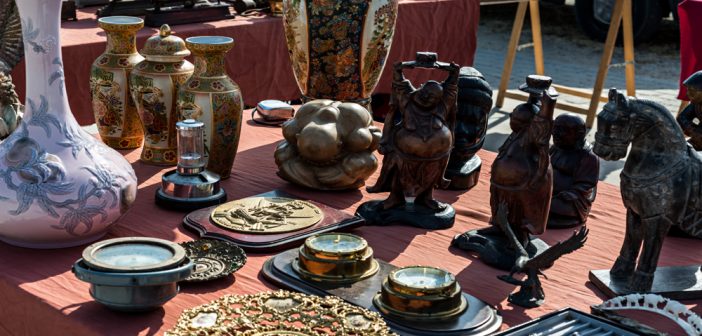Antique collecting can be a fun hobby or a serious business. Browsing an antique mall with a friend is a great way to spend time. At heart, antique collectors are treasure hunters, always searching for fabulous items others have overlooked or a specific antique missing from their collection.
Understand the Language
Before haggling with dealers, you need to understand the language. When you find yourself drawn to collect a particular item, such as porcelain dolls, Depression glass, antique coins or military memorabilia, you’ll discover many terms specific to that genre. Right now, it’s important to understand a few basic terms.
Antique
A genuine antique must be at least 100 years old.
Collectible
This term has different meanings to different people, but it generally refers to something rare or in demand. Some collectibles are worth much more than their original price, but that’s not always the case.
Fake
An item made specifically to trick the buyer. Even museums have been fooled.
Limited Edition
A print could be labeled, as 16/40, for example, letting you know that only 40 were produced and you have the 16th. On the other hand, a commercial “limited edition” could mean hundreds of thousands were manufactured. Do your research before overpaying.
Provenance
Proof (documents, photos, receipts etc.) to show who made it, owned the item, and where it came from. Expensive and unique items usually have a provenance.
Reproduction
A reproduction is a copy of an antique. Typically, a reproduction is less than 100 years old (although it could be older) and sells for much less than the original. While many reproductions are labeled and sold as such, that’s not always the case. The more items you examine and learn about, the easier it will be to tell the difference. Here are a few tips you may find helpful.
Vintage
A vintage item is less than 100 years old, such as something from the 1950s.
What Should You Collect?
Collect what you love and can afford. If you have more than one of something, it’s a collection. Probably most antique lovers have multiple interests. When you love something, you’ll be more interested in learning about it. Buy a couple books on the subject. Ask questions of dealers. When they aren’t too busy, most will be happy to answer a few questions even if you’re not buying.
Window Shop Before You Buy
Before you open your wallet, spend time in galleries, museums and high-end antique shops. Become familiar before spending money, even if you have a small budget. Learn to distinguish the good from the junk.
Items to Take With You
Tape Measure
Measure large pieces before you buy.
Small Notebook
Make notes of items of interest, locations of dealers, names and phone numbers etc.
Magnifying Glass
Condition matters, especially when the item is pricey. Check for chips, cracks and other possible defects.
Camera
Grab your phone and take pictures for research, to jog your memory later or to run by an expert.
Condition is Supreme
It’s better to buy a few items in excellent condition than to buy many mediocre items. Excellent condition antiques will normally become more valuable and should be treated as investments. Damaged items seldom appreciate in value, unless the item is unique, rare or the damage is an essential part of the item’s story (such as a bullet hole in a Civil War uniform).
Beginning collectors often buy items with cracks, tears or chips because of the reduced price. In fact, such items are sometimes referred to as “beginner antiques.” A piece of furniture that was poorly constructed will seldom be valuable simply because it’s old. Some might be tempted by the low price on a chair that badly needs reupholstering without considering the cost involved – or if doing so will actually make the item worth less. Never do anything to change an antique’s original condition without first doing your research.
Refinishing antique furniture with historic significance is a big no-no. The original patina and patterns of wear are destroyed. However, anything that is old can need repair. That work should only be done by someone with the knowledge and experience to do it properly, using the right tools, glues, nails, finishes and techniques. A well-done restoration/repair could actually increase the value of some antiques. Here are a few tips on caring for antique furniture.
Always Save the Box
When you find a toy or other item in its original box, that’s a real find. In fact, the box could be worth more than the contents. An item labeled MIB (mint in box) is usually left in the unopened box. If you decide to display your find without the box, store the box safely.
Enjoy the Journey
Sometimes incredible things are discovered in the most unlikely places. You could even turn your hobby into a business. Whatever you decide, have a good time, spend your money wisely and enjoy your collection.







